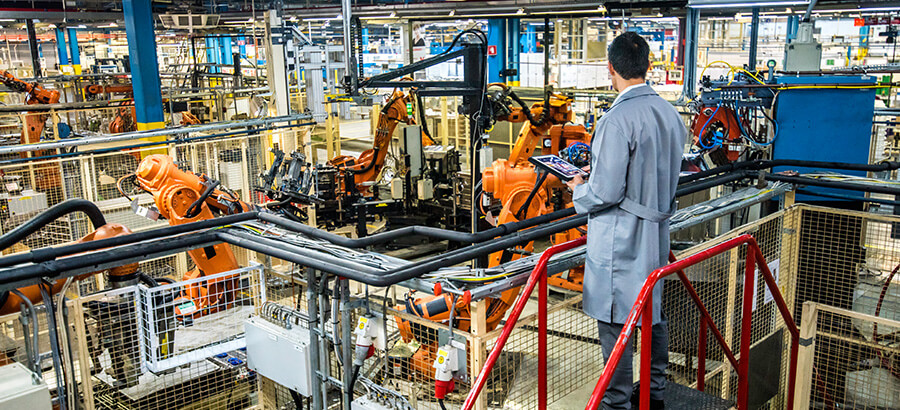SYSPRO listens to different perspectives at two events in Kenya – one the CIO view and the other the CFO view on Digital Transformation – both November2021. Here we shared our experiences
Looking at the CIO
SYSPRO Africa first visited Mombasa Kenya at the main gathering in East Africa of CIOs – CIO 100. Hot sun directly overhead, huge humidity, white sands and a coral reef 1km offshore. The ideal location to let the ideas flow. So here is what we picked up:
1. The importance of IT and infrastructure security
IT and infrastructure security came out strong. Whether in the cloud or on-premise or both, security of access, data and supplier integrity are paramount with digital transformation – but solid security is also required to create customer’s confidence in deployment of any Business IT. When 27% of security/access is listed as user errors, and 9% are mistakes but 18% are malicious, users are twice as likely to intentionally harm data than make genuine errors. How do you mitigate this risk?
Relook business processes and opportunities – yes pick the low hanging fruit – but only if it’s a priority for your company and it brings significant improvement and returns. Too many organizations reach too near and see little return – it’s called Digital Transformation not Digital Tickling. Remember you cannot learn to swim by paddling in the shallow water. To get to value, transformation brings people-pain, and you have to go through it, so make sure the change is relevant, important, and valuable.
2. Investing in digital transformation training
There are essential benefits from different types of training needed for digital transformation. Sure, train software use, train software system-admin, all essential, but just as important is to expose the implementing techies to your business. They need to really understand your business and not just the generic traits of your industry. Salespeople, executives, and implementation teams must get into the trench with you, and dependent on each other to get to the end. So do a couple of days on-site being led round your customers’ operations to see, hear, touch, smell and taste what matters.
Looking at the CFO
Next SYSPRO moved to Nairobi where, with ICPAK (The Institute of Certified Public Accountants of Kenya), we delivered the results of the INDUSTRY 4.0 regional research into manufacturing and distribution companies during the Covid-19 period to date. One point you should keep in mind is that the Kenyan economy includes a large Food & Beverage sector which grew by 43% in 2021 and accounted for 46% of exports.
These are the key findings which may apply to a degree globally.
Recovery in and from covid affected business
- 7% of companies say they are fully recovered
- 51% said they expect full recovery by end of 2022
- 36% said they believe recovery will only be in 2023 and beyond
Is it wait, see, and survive, or should companies seek efficiencies, technology value and come out running? This depends on cash flow, financial support, and appetite for risk.
Trading conditions
- 50% said trading conditions are fair – that doesn’t mean good, it’s doing ok but not thriving
- 1% only said they are already thriving
Although 51% seem ok, all companies still had to weather the economic slowdown, some due to the measures instigated to curb the spread of Covid like lockdowns and restricted movement to name a few.
But management time is available in slack-times so investment to move up the digital curve is a real opportunity. Why are people missing it and merely surviving? Isn’t this a missed competitive opportunity to come out of Covid running?
Funding – help is at hand – or is it?
Some larger companies linked to Europe and US have received assistance from their principals. Government assisted by reducing tax and other structural reforms, but the research showed regarding actual direct support, that:
- 51% received no direct funding
- 38% benefited from tax deductions only
- 13% acknowledged benefit from stimulus packages
Many Kenyan companies were left to survive on their own funds in the pandemic economy of reduced demand for goods resulting in downsizing, amending products etc. In addition, companies receiving direct government funding mostly used it to cushion them from costs and not to drive recovery.
These are both surprising negative impacts. And as a result, the Kenyan manufacturing and distribution sector is receiving half the help of the global average, with Value Add reduced by 0.1% in 2020/21compared to growing 2.5% in 2019.
Supply Chain effect
Global supply chain disruption affected all countries and for Kenya the most significant effect is that 77% suffered from delays in supply from global and local supply chains
When you consider Kenya is a Food & Beverage skewed economy this means sectors like Fabricated Metals, Automotive Supply, and other manufacturers were even more severely impacted by disruptions.
Spending and Innovation – the focus and source of funds
Interesting facts came to light when looking here:
- 31% of Kenyan businesses wish to diversify by investing in new technology
- 70% are committing to taking on or optimizing the application of ERP, ERM and BI
- 58% are earmarking the importance of Business IT for their future recovery
But
- 65% of companies prefer to fund these investments out of their own pocket without debt
- 65% also prefer traditional cost-cutting to fund efficiencies and improvement like diversification
The result of this is that while 37% of Kenyan Manufacturers elected to diversify as a result of the pandemic, just over half the global average, but many chose RENOVATION of existing processes with IT over INNOVATION where new or more sophisticated technologies are introduced to re-engineer supply chains, add eCommerce, predictive functions like AI/ML or simply optimize planning and execution. You could say companies are using ERP as Covid-relief.
Return from digital investments
- 41% of surveyed companies have not enumerated their ROI from digital investments
- 7% don’t know and have never measured ROI
- 34% are just now planning to start measuring returns on digital investments
If you do not have a digital transformation project target/targets you will never realize the value of your digital initiatives. It’s like driving on holiday without thinking about a destination – fun at the start but you don’t know where you’ll end up.
The Covid-Business-Disease appears to be companies sticking to continuous improvement (renovation) rather than step-change (innovation) – strange for Kenya a region known for its trading entrepreneurialism and application of technology, always trying to lead.
The Manufacturing 4.0 Survey shows post pandemic companies need and want to innovate but are struggling and may not emerge in the best of shape.
All CIOs and CFOs have an appetite for innovation and diversity through technology. There is a need to create relevant investments to enable best customer service from minimum investment in inventory. This is the fighting ground of supply chain and ERP.
It’s my view, but Kenya is the brightest star in the African continent. There is a remedy for African countries if they are keen to innovate with technology like ERP to enable the tidy-up of current processes. Those businesses keen to innovate new capabilities but are not able to execute adequately due to funding and Covid mitigation constraints could mean that other Africa countries’ economies including South Africa may come out of Covid in truly bad shape.
Hello, we are all part of the same world. Let’s see what the future will look like.








1 thought on “Digital transformation for Africa’s manufacturing and distribution CIO and CFO”